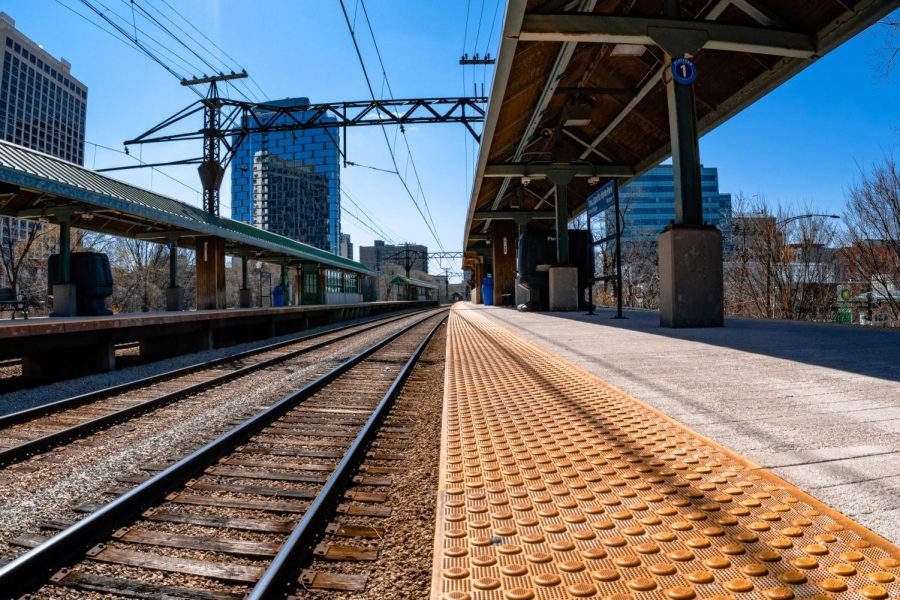Students change daily commute, reduce reliance on public transportation
The 57th street Metra station, located just blocks away from U-High, continues to run amidst the pandemic.
April 23, 2021
Last year, Maya Atassi rode the train every day from her home in the west suburbs, feeling a sense of independence as the train surged along the steel tracks. This year, however, her ride looks very different.
Due to COVID-19’s influence on public transportation and school bus availability, many students have had to adapt their daily commute, prompting notable changes in their mood and energy.
To help keep people protected, the Metra trains are operating on alternate schedules during weekdays and the station’s Sunday schedule will cover the entire weekend. Riders are required to wear masks and trains are kept at half-capacity.
Despite her past reliance on the train and its new safety measures, Maya, a sophomore, said this year she avoids the train as much as possible to maintain her health.
“I really have only taken the train once or twice since COVID started,” she said. “It’s very unsanitary, and my parents don’t really want me to ride it, or the bus as well.”
While Maya gets rides from her parents when she can, she often has to catch Ubers, which raises its own set of concerns — not only health-related, but also for safety as a teenager in a ride-share vehicle.
“You have to be cautious with the Uber driver, and have to be alert,” Maya said. “And it’s also much more expensive, so automatically your mood is going to be ruined, because now you have to pay much more to get home.”
Maya said that one benefit to riding with her parents — despite the rush to get out the door on her parent’s schedule and uncertainty of getting a ride — is that she gets to spend more time with them in the car.
Some students have also found that COVID-19 has affected their eagerness to get a license, such as senior Megan Flannigan, who got hers in late 2020. Having used public transportation since her freshman year, Megan said she started driving on her own much more frequently once hybrid learning began.
“I still take the train and the bus, but I don’t take it as much because, with a late start, it’s really hard to find a bus schedule that works for me,” Megan said. “So driving has been very helpful.”
The CTA has also taken rigorous cleaning measures, such as implementing electrostatic sprayers, disinfecting before, after and during transportation, as well as requiring all riders to wear a mask.
While she said she misses seeing some of her friends on the train, Megan said driving has improved her energy level as she gets to wake up later.
When she does take the train, Megan has found that the trains are much emptier, quieter, and, in some ways, safer.
“I take the Pacific North Line, which is a Metra train, and it’s definitely cleaner than the CTA bus,” she said. “And while I’m not exactly sure of all the specific processes they use to clean trains, I don’t feel unsafe.”




























































